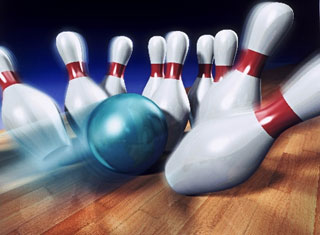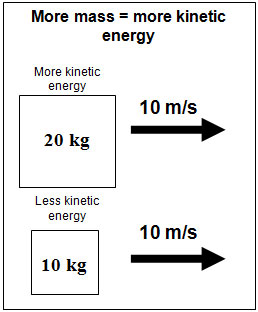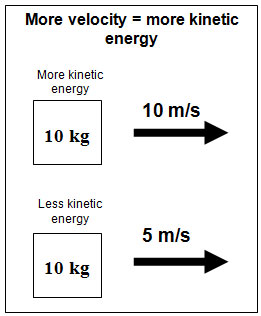

Imagine that you are bowling. You release the ball and it travels down the lane and knocks all of the pins down. You have bowled a strike!
The bowling ball traveling down the lane is an example of kinetic energy. When the ball hit the pins and knocked them over, work was performed.
The kinetic energy of an object depends upon its mass and its velocity.
Imagine that you are bowling, but this time, you use a tennis ball to try to knock down the pins. You roll the bowling ball and the tennis ball at the same velocity, with the same force, and hit the pins in the exact same location.
Which ball would knock down more pins?
Interactive popup. Assistance may be required. the bowling ball
![]() Click the "Roll" button below.
Click the "Roll" button below.
The bowling ball has more kinetic energy because it has more mass. Kinetic energy increases as mass increases.

Velocity also affects kinetic energy. To make the bowling ball move faster you have to throw it harder, or use greater force.
Two bowling balls with the same mass are released at different velocities and hit the pins in the same location. Which one would knock down more pins?
Interactive popup. Assistance may be required. the ball moving at a greater velocity
![]() Click the "Roll" button below.
Click the "Roll" button below.
Kinetic energy increases when velocity increases.
